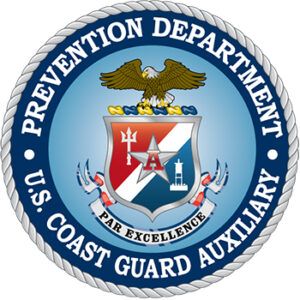Here is an event guide for any/all beach/waterway cleanup events.
The following material is provided to assist Staff Officers at all levels in performing the duties of their office more effectively. If there is special material that would be helpful, please email the DSO-MS through the MS Chain, ensuring you copy your respective VCs.
The following resources are available for you below:
- Want to try something new? This document provides an orientation to the Prevention Department and its major programs.
- MS/MEP Overview 2024 is a PowerPoint created by the DSO-MS to provide an overview of the Marine Safety Training program and other MS programs.
- FSO-MS PQS is the PQS for FSO-MS officers and provides a checklist of suggested tasks for the office.
- So you are an FSO-MS. What now? It is a presentation to orient any FSO-MS officer to their office’s duties and responsibilities.
- SO-MS PQS is the PQS for SO-MS officers and provides a checklist of suggested tasks for the office.
- So you are an SO-MS. What now? It is a presentation to orient any SO-MS officer to their office’s duties and responsibilities.
 The Marine Safety Program is designed to recognize the Auxiliarist who attains a specific level of education and practical experience in Marine Safety and Environmental Protection Missions. Full details of the program are available from the National resource link below. However, Marine Safety is a prevention training program with three components: Education, Performance Qualification Standards, and Service. Achievement is recognized with the distinctive Marine Safety M-Pro Pin, shown here.
The Marine Safety Program is designed to recognize the Auxiliarist who attains a specific level of education and practical experience in Marine Safety and Environmental Protection Missions. Full details of the program are available from the National resource link below. However, Marine Safety is a prevention training program with three components: Education, Performance Qualification Standards, and Service. Achievement is recognized with the distinctive Marine Safety M-Pro Pin, shown here.
To qualify for the Pin, the member must earn the Marine Safety Training Ribbon by taking and passing seven (7) courses, including Introduction to Marine Safety & Environmental Protection, Good Mate, ICS 100, 200, 210 or 300, 700 and 800, and earning one (1) Performance Qualification Standard.
Once the MSTR has been earned, the member must earn at least three (3) more Performance Qualification Standards from those currently available. Finally, the member must log at least 96 hours per year in AUXDATA II for five (5) years and then complete an application co-signed by the DSO-MS and accompanied by a Letter of Recommendation from the COTP.
For further details, follow the resource links below.
Each of the Performance Qualification Standards may be downloaded from the National Prevention Directorate website’s Marine Safety Performance Qualification Standards page (resource below).
Auxiliary members must have a Verifying Officer who holds that PQS or the Active-Duty equivalent; MSAM and AUX MEES PQSs are Auxiliary-only and require an Auxiliary mentor who holds the PQS as a Verifying Officer. Contact the DSO-MS for a mentor for each of these PQSs.
The Sector Active-Duty Training Coordinator Office will assign the initial mentor and Verifying Officer for Auxiliarists participating in the program. Best efforts will be made at this stage to train the participating Auxiliarists as trainers, mentors, and Verifying Officers for successive Auxiliarists seeking qualification in a particular PQS. Auxiliarists can serve as Verifying Officers (the right to sign off on a PQS) only for those qualifications in which they hold a Letter of Designation (LOD) and have been selected to act as a Verifying Officer either by the Active-Duty Training Coordinator or DIRAUX (for MSAM and AUX MEES PQSs).
Upon completion of a PQS booklet, candidates must pass an Oral Board led by Active-Duty personnel qualified in the particular specialty (or Auxiliarists in the case of MSAM and AUX MEES PQSs) to receive a Letter of Designation testifying to completion. The remaining members of the PQS panel may be Active- Duty, Reserve, Civilian, and/or Auxiliary personnel who are certified in the subject qualification or a related, higher level, Activy-Duty PQS (except for MSAM and AUX MEES PQSs which require that all three Oral Board members be Auxiliarists who hold the PQS).
Upon completing all certification requirements for a particular PQS, the Captain of the Port (COTP) or his designee will issue a Letter of Designation to the member. The Auxiliarist is responsible for submitting a copy of the letter through appropriate channels. The Letter of Designation shall be forwarded to the DIRAUX (DPA-S), who will enter the designation into AUXDATA II. A Letter of Designation can only be provided to members who have completed the particular PQS booklet. The Letter of Designation for the two AUX-Only PQSs – MSAM and MEES – is issued by DIRAUX upon recommendation of the DSO-MS following review of the completed PQS booklets and the oral board results.

